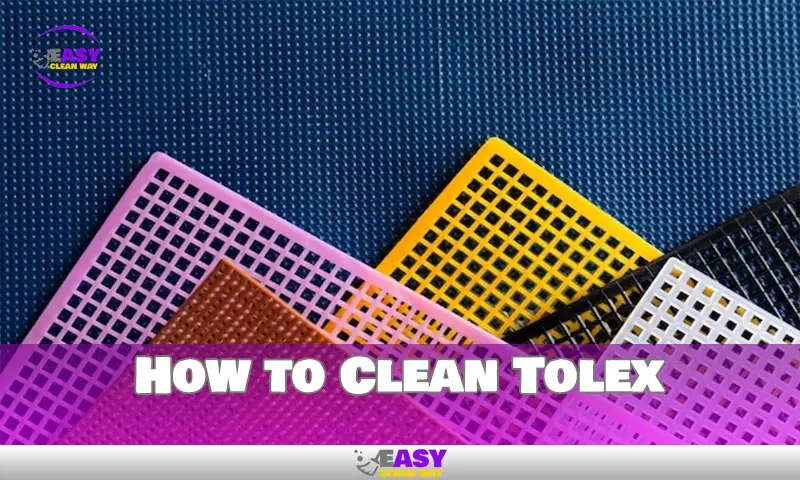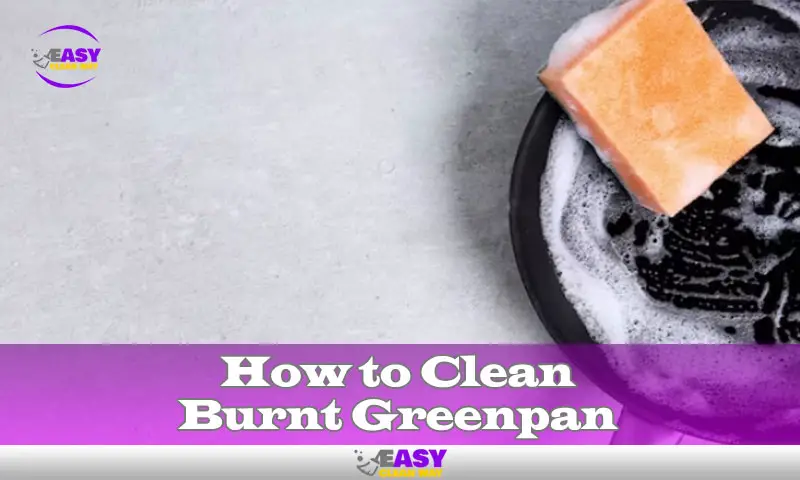To clean the tolex, gently wipe the surface with a solution of mild soap and water. Avoid using abrasive cleaners or harsh chemicals.
Owning a tolex-covered item, whether it’s a guitar amplifier or a piece of furniture, requires proper maintenance to keep it looking its best. Over time, tolex can accumulate dirt, dust, and grime, which can compromise its appearance and even cause damage if not addressed.
In this article, we will provide you with a simple and effective method to clean tolex surfaces, enabling you to maintain their original beauty. By following these steps, you can ensure that your tolex-covered items stay in excellent condition and continue to impress with their sleek and stylish look.
What Is Tolex, And Why Is It Commonly Used In Amplifier Construction?

Tolex is a type of vinyl material that is widely used in the construction of amplifiers. It is known for its durability and protective properties, making it ideal for covering amplifier cabinets. Here are some key points to help you understand tolex:
- Tolex is a vinyl material that resembles leather and is commonly used in the music industry for amplifiers and speaker cabinets.
- It is a strong and resilient material that can withstand regular wear and tear, making it perfect for protecting amplifier exteriors.
- Tolex is available in a wide range of colors and textures, allowing musicians to customize the look of their amplifiers to suit their personal preferences.
- The material is also water-resistant, which provides an additional layer of protection against spills and moisture.
- Tolex is easy to clean and maintain, making it a practical choice for musicians who want to keep their amplifiers looking clean and presentable.
Different Types Of Tolex Materials And Their Characteristics

Tolex comes in various types, each with its own characteristics and attributes. Let’s explore some of the different tolex materials available:
- Standard tolex: This is the most commonly used tolex material and is known for its ruggedness and durability. It is available in a wide range of colors, textures, and patterns. Standard tolex is resistant to scratches and tears, providing excellent protection for amplifier cabinets.
- Tweed tolex: This type of tolex is designed to replicate the classic tweed fabric used on vintage amplifiers. It offers a nostalgic and vintage look, perfect for musicians who want to capture the essence of old-school rock and roll.
- Faux snakeskin tolex: If you’re looking for a unique and eye-catching design, faux snakeskin tolex is a great option. It mimics the appearance of real snake skin, adding a touch of exotic flair to your amplifier.
- Sparkle Tolex: For those who want a bit of glitz and glamour, sparkle tolex is the way to go. It features small metallic flakes embedded in the material, creating a shimmering effect that catches the light.
Benefits Of Tolex For Amplifier Protection And Durability
Tolex offers several benefits when it comes to protecting and ensuring the longevity of amplifiers. Here are some reasons why Tolex is favored for amplifier construction:
- Durability: Tolex is highly durable and can withstand the rigors of regular use and transportation. It acts as a protective shield for the amplifier, preventing scratches, dents, and other damages.
- Easy maintenance: Tolex is easy to clean and maintain. A simple wipe with a damp cloth is usually sufficient to remove any dirt or dust that accumulates on the surface. This helps keep the amplifier looking clean and well-maintained.
- Customization: Tolex is available in a wide range of colors, textures, and patterns, allowing musicians to personalize the appearance of their amplifiers. This customization adds a personal touch and makes the amplifier stand out from the crowd.
- Moisture resistance: Tolex is water-resistant, protecting the amplifier from spills and moisture that could potentially damage the internal components. This makes it suitable for outdoor performances or venues with high humidity levels.
- Professional look: Tolex gives amplifiers a polished and professional appearance. It adds a finishing touch to the overall aesthetics of the amplifier, making it visually appealing on stage or in the studio.
Tolex is a versatile and reliable material commonly used in amplifier construction. Its durability, customization options, and protective properties make it an excellent choice for musicians who want to keep their amplifiers in top-notch condition.
Essential Cleaning Tools And Materials
Keeping your tolex clean and free from dirt and grime is essential for maintaining its appearance and longevity. To ensure you have everything you need for effective cleaning, here is a list of necessary cleaning tools and recommended solutions:
- Soft-bristled brush: A soft-bristled brush is ideal for removing dust and particles from the surface of the tolex without causing any damage.
- Microfiber cloth: A microfiber cloth is a must-have for wiping down the tolex after brushing. It effectively picks up and traps dirt, leaving a clean and polished surface.
- Mild soap or detergent: Using mild soap or detergent mixed with warm water can help remove stubborn stains or marks on the tolex. Ensure the soap is non-abrasive and gentle to avoid discoloration or damage.
- Distilled water: Distilled water is preferred for cleaning purposes as it is free from impurities that may leave residue on the tolex surface.
- Isopropyl alcohol: Isopropyl alcohol is excellent for tackling sticky substances or adhesive residue on the tolex. However, use it sparingly and test it on a small, inconspicuous area first to ensure it does not cause any harm.
- Soft toothbrush: A soft toothbrush can be handy for cleaning hard-to-reach areas and crevices on the tolex. Ensure it is gentle enough not to scratch the surface.
- Toothpicks or cotton swabs: Toothpicks or cotton swabs can be useful for removing dirt or grime from tight spots or corners of the tolex.
Recommended Cleaning Solutions And Materials
When cleaning your tolex, it is important to use the right cleaning solutions and materials to ensure a safe and effective process. Here are some recommended options:
- Tolex cleaner: Using a specialized tolex cleaner can simplify the cleaning process and provide excellent results without any risk of damaging the material. Look for a cleaner specifically designed for tolex surfaces.
- Mild dish soap: If you don’t have a tolex cleaner, mild dish soap mixed with distilled water can be a suitable alternative. Ensure the soap is free from harsh chemicals and abrasive properties.
- Soft cloth or sponge: When applying cleaning solutions, use a soft cloth or sponge to gently work the solution into the tolex. Avoid using abrasive materials that may cause scratching or fabric damage.
Safety Precautions And Tips For Handling Cleaning Agents
While cleaning the tolex, it is essential to follow safety precautions and tips to protect yourself and the material from any potential harm:
- Wear gloves: To avoid any allergic reactions or skin irritations from cleaning agents, it is recommended to wear gloves while handling them.
- Test cleaning solutions: Before applying any cleaning solution to the entire tolex surface, test it on a small, inconspicuous area to ensure it does not cause discoloration or damage.
- Avoid excessive moisture: When cleaning, always wring out your cloth or sponge well to avoid saturating the tolex with excessive moisture. Excess water can seep into the material and cause damage.
- Dry thoroughly: After cleaning, ensure the tolex is dried thoroughly to prevent the growth of mold or mildew. Use a clean, dry cloth to remove any excess moisture.
- Store safely: When not in use, store your cleaning solutions and materials in a cool, dry place away from direct sunlight to maintain their effectiveness.
By using these essential cleaning tools, the recommended solutions, and following safety precautions, you can effectively clean your tolex and keep it looking its best for years to come. Remember to always test cleaning agents on a small area first and handle them with care to avoid any adverse effects on your tolex surface.
Preparing For Tolex Cleaning
Cleaning the tolex covering of your amplifier is an essential part of maintenance to keep it looking its best. Before you begin the cleaning process, there are a few steps you need to take to prepare. By following these guidelines, you can ensure a smooth and effective cleaning process without damaging any delicate components.
Step-By-Step Instructions For Removing The Amplifier’S Back Panel And Other Detachable Parts
To properly clean your amplifier’s tolex, you’ll need to start by removing the back panel and other detachable parts. Here’s a step-by-step guide to help you through the process:
- Begin by turning off and unplugging your amplifier to ensure your safety during the cleaning process.
- Locate the screws or fasteners that hold the back panel in place. Using a screwdriver or the appropriate tool, carefully remove these screws and set them aside in a safe place.
- Gently pull the back panel away from the amplifier’s chassis, being cautious not to tug on any wires or cables connected to it.
- Carefully inspect the back panel and the internal components for any signs of dirt, debris, or damage. Take note of any loose connections or worn-out parts that may need attention.
- To clean the back panel, use a soft cloth or brush to gently wipe away any dust or grime. For stubborn stains, you can dampen the cloth slightly with water or a mild cleaning solution specifically designed for tolex surfaces. Avoid using harsh chemicals or abrasive materials that could damage the tolex.
- Once the back panel is clean, set it aside in a safe place while you move on to other detachable parts, such as knobs or input jacks. Follow the same cleaning process for these parts, ensuring you handle them with care.
- Inspect the amplifier’s chassis for any dust or debris that may have accumulated. Use a soft brush or compressed air to gently clean these areas, taking care not to dislodge or damage any internal components.
- After you have cleaned all the detachable parts and the chassis, carefully reattach the back panel. Align it properly with the amplifier’s chassis and secure it in place using the screws or fasteners.
- Once everything is securely fastened, give the amplifier a final inspection to ensure all connections are tight and in good condition. Plug in the amplifier and power it on to verify that everything is working properly.
Remember, when handling any electrical components, it is important to follow safety protocols and disconnect the amplifier from power sources. This will help prevent any electrical shocks or damage to the equipment.
How To Safely Disconnect And Remove Electrical Components
In order to clean the tolex covering without risking damage to any electrical components, you need to safely disconnect and remove them. Here are a few steps to guide you through the process:
- Before starting, make sure the amplifier is turned off and unplugged.
- Identify the electrical components that need to be disconnected or removed for cleaning. This may include knobs, switches, or input jacks.
- Gently pull the knobs or switches away from the amplifier’s chassis. If they are particularly tight, use a small tool like a flathead screwdriver to pry them off carefully. Remember to apply gentle pressure to avoid damaging the components or the tolex covering.
- As you remove each electrical component, take care to label or photograph them for easy reassembly later.
- If you encounter any resistance when pulling the components, double-check for any screws or fasteners that may be holding them in place. Unscrew these if necessary before proceeding with removal.
- Once you have safely removed the electrical components, set them aside in a secure location where they won’t get damaged. Avoid placing them near any cleaning products or water.
- Proceed with cleaning the tolex covering following the instructions provided by the manufacturer or the ones mentioned.
- After you have finished cleaning the tolex, carefully reattach and reconnect the electrical components in the reverse order of how you removed them. Make sure everything is securely fastened and aligned properly.
- Once all the electrical components are back in place, perform a thorough visual inspection to ensure everything is properly connected and working as intended.
By following these steps and taking proper precautions, you can safely remove and clean electrical components without any risk of damage to your amplifier.
Cleaning Techniques For Tolex
General Guidelines For Cleaning Tolex Without Damaging The Amplifier:
- Use gentle cleaning techniques to avoid any damage to the tolex surface or the amplifier itself.
- Always start by disconnecting the amplifier from the power source to ensure safety.
- Avoid using harsh chemicals or abrasive materials that can cause discoloration or scratches on the tolex.
- Test any cleaning solution on a small, inconspicuous area first to ensure it does not cause any adverse effects.
- Work in a well-ventilated area and wear protective gloves if necessary to avoid any skin irritation.
- Follow the amplifier manufacturer’s instructions for cleaning and maintenance, if available.
Using Soft Brushes And Microfiber Cloths To Remove Dust And Debris:
- Begin by using a soft brush, such as a paintbrush or a clean, dry toothbrush, to gently remove loose dust and debris from the tolex surface.
- Brush in one direction to avoid pushing dirt further into the fabric.
- Use a microfiber cloth to wipe away any remaining dust or particles, again working in one direction.
- For harder-to-reach areas or textured surfaces, consider using a vacuum cleaner with a soft brush attachment to remove dust effectively.
Removing Stains, Spills, And Stubborn Dirt From Tolex Surfaces:
- For liquid spills, immediately blot the area with a clean cloth or paper towel to absorb as much liquid as possible, without rubbing.
- Avoid using excessive water or soaking the tolex, as it can cause damage. Instead, dampen a clean cloth with a mild detergent solution and gently blot the stain.
- Work in small, circular motions to lift the stain without spreading it further.
- Rinse the cloth and repeat the process until the stain is no longer visible.
- Dry the cleaned area thoroughly with a separate cloth or by using a fan on low speed to prevent moisture buildup.
Addressing Specific Cleaning Challenges For Different Tolex Materials:
- Vinyl tolex: Use a vinyl cleaner specifically designed for vinyl surfaces. Apply the cleaner to a soft cloth and wipe the tolex surface gently, following the manufacturer’s instructions.
- Tweed tolex: Use a dry brush or microfiber cloth to remove dust and dirt from the weave pattern. Be cautious not to apply too much pressure, as it may cause the fabric to unravel.
- Rough tolex: Use a soft brush or vacuum cleaner to remove dust and dirt from the textured surface. Avoid using excessive force or scrubbing motions that can damage the tolex.
- Faux leather tolex: Clean using a leather cleaner or a damp cloth with mild soap. Gently wipe the surface in a circular motion and dry thoroughly to prevent water stains.
Remember, proper cleaning and maintenance of tolex surfaces can help preserve the appearance and longevity of your amplifier. Regularly removing dust and addressing stains promptly will ensure your amplifier looks its best and performs optimally for years to come.
Drying And Conditioning Tolex
Proper Techniques For Drying Tolex After Cleaning
After giving your tolex a thorough cleaning, it’s important to ensure that it dries properly to maintain its quality and appearance. Here are some proper techniques for drying tolex after cleaning:
- Allow ample time for the surface to air dry: It’s crucial to give your tolex enough time to air dry completely. This will help prevent any moisture from lingering and potentially causing damage. Remember, patience is key when it comes to drying tolex.
- Avoid using direct heat sources: While it may be tempting to speed up the drying process by using a hairdryer or heat gun, it’s best to avoid direct heat sources. High temperatures can damage the tolex material, leading to cracking or fading. Instead, opt for air drying in a well-ventilated area.
- Place the tolex in a clean, dry environment: To ensure proper drying, make sure the tolex is in a clean and dry environment. Avoid areas with high humidity or excessive moisture, as this can prolong the drying time or promote mold and mildew growth.
- Gently blot excess moisture: If there is any excess moisture on the tolex surface after cleaning, gently blot it with a clean and absorbent cloth. Avoid rubbing or scrubbing vigorously, as this can damage the material. Patience and gentle care are key here.
The Importance Of Allowing Ample Time For The Surface To Air Dry
One of the crucial steps in properly drying tolex after cleaning is allowing ample time for the surface to air dry. Here’s why it’s important:
- Prevents moisture damage: Allowing the tolex to air dry completely helps prevent any moisture from remaining on the surface. This is important because moisture can lead to deterioration, mold, or mildew growth, which can cause irreversible damage to the tolex material.
- Maintains quality and appearance: Drying tolex thoroughly ensures that it retains its quality and appearance. If the tolex is not adequately dried, it may develop wrinkles, discoloration, or a dull finish, diminishing its overall aesthetic appeal.
- Avoids potential issues: Rushing the drying process by using direct heat sources can result in damaging the tolex. Heat can cause the material to warp, crack, or fade, compromising its integrity. By allowing the tolex to air dry, you minimize the risk of such issues.
- Preserves longevity: Properly drying tolex contributes to its durability and longevity. When the material is fully dry, it is less prone to damage, cracking, or fading, making it last longer and saving you from unnecessary repairs or replacements.
How To Condition Tolex To Maintain Its Quality And Protect Against Cracking Or Fading
To maintain the quality and longevity of your tolex, it’s essential to condition it regularly. Follow these steps to condition your tolex and protect it against cracking or fading:
- Choose a suitable tolex conditioner: Look for a conditioner specifically designed for tolex materials. These conditioners often contain ingredients that nourish the material, enhance its luster, and provide protection against cracking or fading.
- Clean the tolex surface: Before conditioning, ensure that the tolex surface is clean and free from any dirt or debris. Use a mild cleanser or a damp cloth to gently remove any residue.
- Apply the conditioner: Take a small amount of the tolex conditioner and apply it evenly onto the surface. Use a clean cloth or sponge to spread the conditioner in a circular motion. Ensure that you cover the entire tolex surface.
- Let it absorb: Allow the conditioner to absorb into the tolex for the recommended time mentioned on the product label. This allows for optimal nourishment and protection against cracking or fading.
- Wipe off excess: After the recommended time, use a clean cloth to gently wipe off any excess conditioner. Make sure to remove any residue to prevent a sticky or greasy feel.
- Repeat as needed: The frequency of conditioning depends on usage and environmental factors. Generally, it is recommended to condition tolex every few months or as needed to maintain its quality and protect against cracking or fading.
Properly drying and conditioning your tolex not only keeps it looking great but also extends its lifespan. By following these techniques and incorporating regular maintenance, your tolex will remain in top condition, allowing you to enjoy its beauty for years to come.
Preventive Maintenance Tips
Best Practices And Tips For Preventing Tolex Damage
Tolex is a durable material commonly used to cover amplifiers and other musical equipment. However, it is still susceptible to damage from spills, scratches, and exposure to sunlight. Here are some preventive maintenance tips to help you keep your tolex-covered equipment in top condition:
- Keep drinks away: Accidental spills can cause irreversible damage to tolex. Avoid placing drinks or any liquids near your tolex-covered amplifier to prevent potential spills.
- Handle with care: Ensure that you handle your equipment with care, especially when moving or transporting it. Take extra precautions to avoid bumping or scratching the tolex surface.
- Store in a suitable location: Find a safe and suitable spot for your tolex-covered equipment when it’s not in use. Avoid placing it in areas with a high risk of spills, excessive sunlight exposure, or heavy traffic.
- Use protective covers: Consider investing in protective covers specifically designed for tolex. These covers can provide an extra layer of protection against dust, spills, and scratches.
- Clean regularly: Regular cleaning is essential to maintaining the appearance of tolex. Develop a cleaning routine that includes gentle dusting and wiping with a soft, lint-free cloth.
- Avoid sunlight exposure: Prolonged exposure to direct sunlight can cause tolex to fade or discolor. When storing or using your equipment, keep it away from windows or other areas with direct sunlight.
How To Protect Tolex From Spills, Scratches, And Exposure To Sunlight
To prevent damage to your tolex-covered equipment, it’s important to take proactive steps to protect it from spills, scratches, and exposure to sunlight. Here are some actionable tips:
- Place a barrier: Use a protective barrier, such as a towel or mat, between your tolex-covered equipment and any surfaces where spills may occur. This will help to absorb or redirect any accidental spills away from the tolex surface.
- Encourage caution: If you’re working with others or have bandmates, remind them to be cautious when handling your tolex-covered equipment. Educate them about the potential risks of spills and scratches.
- Invest in a case: Consider using a padded case or gig bag designed specifically for your tolex-covered equipment. These cases provide additional protection against scratches and accidental bumps during transport.
- Store in a controlled environment: Find a suitable storage area for your equipment that is away from direct sunlight, excessive heat, and humidity. These factors can accelerate the wear and tear on your tolex surface.
- Use UV protection: If your tolex-covered equipment is frequently exposed to sunlight, consider applying a UV protection spray or using window coverings to block out harmful UV rays.
- Implement a cleaning routine: Develop a regular cleaning schedule to remove any dust or debris from your tolex surface. Use a soft, lint-free cloth to gently wipe away any dirt, and consider using mild cleaning solutions recommended by the manufacturer.
Remember, preventive maintenance goes a long way toward preserving the longevity and appearance of your tolex-covered equipment. By following these best practices, you can keep your gear in top shape and ensure that it continues to look and function at its best.
Troubleshooting Tolex Issues
Tolex is a popular material used to cover guitar amps, speaker cabinets, and other musical equipment. Over time, it can encounter some common problems that require attention and care. In this section, we will explore the key issues associated with tolex and offer solutions to help you keep your gear looking and performing at its best.
Common Problems Associated With Tolex And Their Solutions
Tolex surfaces can face a range of issues, but with the right techniques, you can restore them to their original glory. Here are some common problems you may encounter and the solutions to address them:
- Scuffs and scratches: Tolex surfaces are prone to scuffs and scratches from regular use and transportation. To fix these imperfections, follow these steps:
- Apply a small amount of rubbing alcohol to a clean cloth.
- Gently rub the affected area in a circular motion until the scuff or scratch is less visible.
- Finish by applying a tolex conditioner or protectant to restore shine and protect against future damage.
- Stains and spills: Accidents happen, and tolex surfaces are not immune to spills or stains. Here’s how you can handle them effectively:
- Blot the spill gently with a clean cloth to absorb excess moisture.
- Mix a mild detergent with warm water and dampen a clean cloth in the solution.
- Gently wipe the stained area in a circular motion, being cautious not to oversaturate the tolex.
- Dry the surface thoroughly with a dry cloth, and use a tolex conditioner to prevent any discoloration.
- Peeling or lifting: Over time, tolex surfaces may start to peel or lift at the edges. To address this issue, follow these steps:
- Use a craft knife or a putty knife to carefully lift the loose tolex.
- Apply a small amount of contact adhesive to both the surface and the back of the tolex.
- Press the tolex firmly onto the surface, starting from the center and working toward the edges.
- Use a roller or apply pressure evenly with your hands to ensure a secure bond.
- Trim any excess tolex using a sharp knife, if necessary.
Repair Options For Damaged Tolex Surfaces
In some cases, the damage to the tolex may require more extensive repair. Here are some options to consider:
- Tolex patching: If the damage is localized to a small area, you can patch it using a tolex repair kit. These kits typically include adhesive-backed tolex sheets that you can cut to size and apply to the damaged area.
- Recovering: If the tolex damage is extensive or if you want to give your gear a fresh look, consider recovering the entire surface. This process involves removing the old tolex and replacing it with a new one. It is a more involved repair option and may require professional assistance if you are not familiar with the process.
Seeking Professional Help For Extensive Tolex Repairs Or Replacement
While many tolex issues can be addressed with DIY methods, extensive repairs or complete tolex replacement may require professional help. Here are a few reasons why seeking professional assistance could be beneficial:
- Expertise: Professionals have experience working with tolex surfaces and can bring their expertise to deliver high-quality repairs or replacements.
- Precision: Tolex replacement requires precision and attention to detail. Professionals can ensure proper alignment, adhesion, and finishing for a seamless look.
- Time and effort: Repairing or replacing tolex can be time-consuming and labor-intensive. By letting professionals handle the task, you can save time and effort while ensuring optimum results.
Remember that proper care and maintenance can help prevent most tolex issues. Regular cleaning and the use of protective solutions can extend the lifespan of your equipment’s tolex covering and keep it looking great for years to come.
FAQ
How Do You Clean Tolex On A Guitar Amp?
To clean the tolex on a guitar amp, start by dusting it off with a soft brush or cloth. Then, use a mild cleaning solution and gently wipe it down. Avoid getting it too wet or using harsh chemicals.
Can I Use Water To Clean Tolex?
While water can be used to clean tolex, it is important to use it sparingly. Dampen a cloth with a small amount of water and gently wipe the tolex surface. Avoid soaking the tolex or using excessive water, as it can damage the material.
What Can I Use To Remove Stains From Tolex?
To remove stains from tolex, you can try using a mild detergent or specialized vinyl cleaner. Apply a small amount to a cloth and gently rub the stained area. Test the cleaner on a small, inconspicuous spot first to ensure it doesn’t cause any discoloration.
How Often Should I Clean The Tolex On My Amp?
The frequency of cleaning the tolex depends on its condition and how often you use the amp. As a general guideline, it is recommended to clean the tolex every few months or as needed. Regular maintenance can help preserve its appearance and lifespan.
Conclusion
To summarize, proper cleaning and maintenance of your tolex-covered items can greatly extend their lifespan and keep them looking their best. By following the steps outlined in this guide, you can effectively remove dirt, dust, and stains without causing any damage to the tolex material.
Remember to always start with a gentle cleaning solution and test it on a small, inconspicuous area before proceeding. Regularly vacuuming and dusting your tolex items will prevent build-up and make the cleaning process easier. Lastly, protect your tolex from direct sunlight and extreme temperatures to avoid discoloration and warping.
With these helpful tips, you can confidently clean your tolex-covered items and enjoy their appearance for years to come. So, go ahead and get your tolex looking brand new again!
Hey there! I’m Alton Smith, your Clean Expert blogger. I’m on a quest to help you conquer chaos and embrace the joys of a tidy life.





